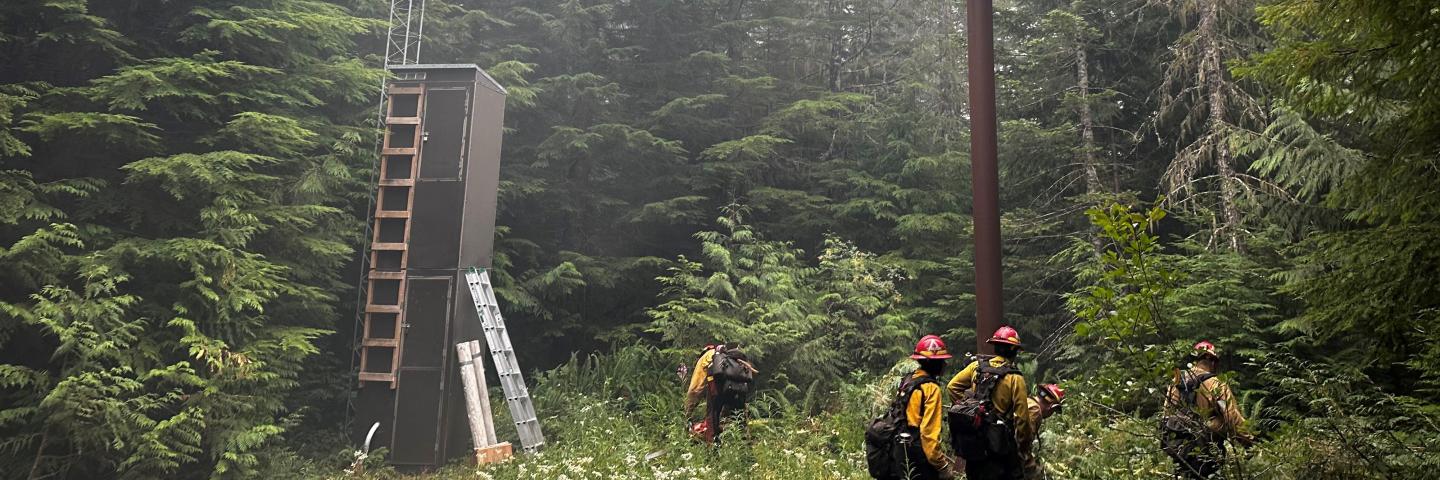Danger Close: Wildfires and SNOTELs

Camp Creek Fire creeps close to South Fork Bull Run SNOTEL.
Wildfires pose a constant threat to SNOTEL sites each summer since most sites are within forested regions across the montane West. The NRCS Snow Survey coordinates diligently with the U.S. Forest Service (USFS) and other land management agencies for site protection measures to both preserve the integrity of data measurements at SNOTEL sites and save sensitive monitoring equipment.
Camp Creek Fire - Oregon
On 8/24/2023, a fire was ignited from a lightning strike in the Bull Run watershed near 2 reservoirs used by the City of Portland for drinking water. The South Fork Bull Run SNOTEL site, located south of the Bull Run Reservoir #1, quickly became endangered as the fire perimeter expanded to within less than 1 mile from the site. At that point, NRCS and USFS coordinated to implement site-protection measures. On Monday, 8/28/2023, NRCS Oregon Snow Survey staff met with USFS fire personnel onsite to remove monitoring equipment. Fire personnel established a defensible perimeter around the site by thinning and removing vegetation and wrapping the shelter using aluminized structure wrap to help prevent the shelter from igniting.
As of this article date, fire activity has moderated and the site and its immediate surroundings remain unburned.
Effects of wildfires on snowpack
Wildfire impacts on snowpack can vary depending on burn intensity, which affects canopy cover and soil burn severity. In a study conducted by Giovando & Niemann (2022), wildfires have, on average, advanced snow melt-out dates by 9 days, advanced peak snow-water-equivalent (SWE) dates by 6 days, and reduced annual peak SWE by 10%. In addition to wildfires, climate change and inter-annual precipitation were found to also significantly impact these factors, especially since climate change is, across much of the West, increasing weather variability, increasing drought occurrence and intensity, and increasing the severity and number of wildfires.
Interested in reading more? Use the links below to access articles.
National Integrated Drought Information System:
Severe Summer Wildfires Are Impacting Western U.S. Mountain Snowpack During Winter and Spring
PNAS: Kampf et al., 2022
Increasing wildfire impacts on snowpack in the western U.S.
AGU: Giovando & Niemann, 2022
Wildfire Impacts on Snowpack Phenology in a Changing Climate Within the Western U.S.

